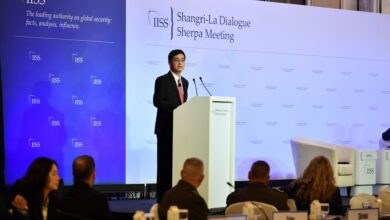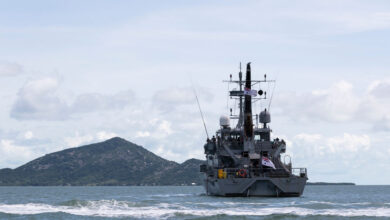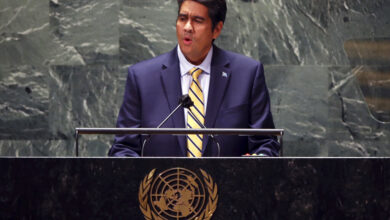Exercise Keen Edge 22 enhances enduring U.S.-Japan alliance

FORUM Staff
Successfully confronting Indo-Pacific challenges requires like-minded nations to think, act and operate innovatively, all key aspects of the enduring U.S.-Japan alliance on display at exercise Keen Edge 22.
Often described as the cornerstone of peace, security and prosperity in the Indo-Pacific and across the world, the relationship between the United States and Japan over the past six decades has been deeply rooted in shared values of defending freedom, championing economic and social opportunity and inclusion, upholding human rights, respecting the rule of law and treating every person with dignity, according to the U.S. Department of State. The bilateral Keen Edge, held January 27 to February 3, allowed U.S. forces and the Japan Self-Defense Forces across Hawaii and Japan to use these shared values as a launching pad to increase readiness and interoperability.
“The U.S.-Japan Alliance is the cornerstone of peace and security in the Indo-Pacific,” Adm. John Aquilino, commander of U.S. Indo-Pacific Command (USINDOPACOM), said in a news release. “In a rapidly evolving security environment where revisionist, autocratic powers seek to disrupt and displace the rules-based international order that has benefited so many, bilateral and multilateral exercises among allies and partners become even more important.”
Keen Edge, a series of command post exercises, alternates with Keen Sword, a series of field exercises. The 2022 iteration of Keen Edge included computer simulations and depicted scenarios so joint forces could practice crisis and contingency responses. Participants identified coordination gaps “to truly leverage the combined strength of our forces,” Maj. Paul Kozick, the III Marine Expeditionary Force Keen Edge 22 planning officer, said in a U.S. Marine Corps news release.
“In this exercise, we further strengthened the interoperability between Japan and the United States through this highly practical training across all domains in an ever more joint and integrated manner,” Gen. Koji Yamazaki, chief of staff, Japan Joint Staff, said, according to USINDOPACOM. “Thereby, it has resulted in the enhancement of the Japan-U.S. bilateral joint response capabilities.”
The U.S. commitment to the defense of Japan is absolute, with the U.S. investing significant military resources and capabilities to meet the alliance’s security challenges, according to the U.S. State Department. Japan hosts approximately 55,000 U.S. service members — the largest contingent of U.S. forces outside the United States — along with thousands of U.S. Defense Department civilians and family members. (Pictured: A U.S. Marine establishes long-range communications during exercise Keen Edge 22 at Camp Hansen, Okinawa, Japan.)
U.S. Secretary of State Antony Blinken highlighted the importance of the U.S.-Japan alliance during a virtual meeting in January 2022 with U.S. Secretary of Defense Lloyd Austin, Japanese Foreign Minister Yoshimasa Hayashi and Japanese Defense Minister Nobuo Kishi. He referenced Japan’s membership in the Quadrilateral Security Dialogue, or Quad, which also includes Australia, India and the U.S., and of deepening that relationship to address challenges that no one of the countries can tackle alone.
“Our military are training and deploying more together. As we do, our forces are improving their capacity to conduct complex, joint operations,” Blinken said.
During the same meeting, Hayashi noted that the international community is facing fundamental and multifaceted challenges that require strong alliances like that between the U.S. and Japan. “Not only in assuring the security of both Japan and the United States but also in maintaining rules-based free and open international order and ensuring regional peace, stability and prosperity, it is important more than ever that Japan and the U.S. are united and exhibit leadership as both nations share strategic interests and universal values.”
IMAGE CREDIT: CPL. DIANA JIMENEZ/U.S. MARINE CORPS




